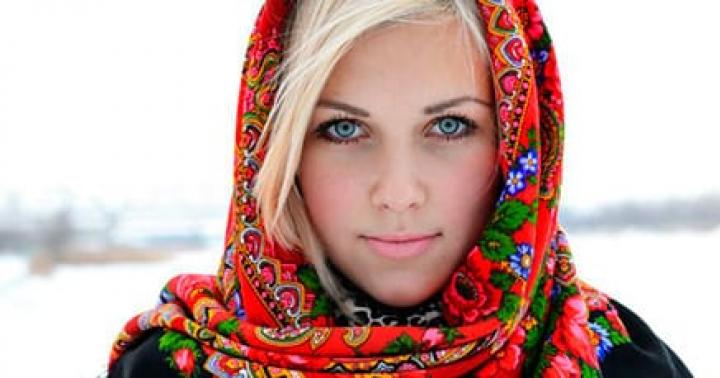The Red Army was created, as they say, from scratch. Despite this, she managed to become a formidable force and win the civil war. The key to success was the construction of the Red Army using the experience of the old, pre-revolutionary army.
On the ruins of the old army
By the beginning of 1918, Russia, which had survived two revolutions, finally emerged from the First World War. Her army was a pitiful sight - soldiers deserted en masse and headed to their homes. Since November 1917, the Armed Forces did not exist de jure - after the Bolsheviks issued an order to dissolve the old army.
Meanwhile, on the outskirts of the former empire, a new war was breaking out - a civil one. In Moscow the battles with the cadets had just died down, in St. Petersburg - with the Cossacks of General Krasnov. Events grew like a snowball.
On the Don, generals Alekseev and Kornilov formed the Volunteer Army, in the Orenburg steppes the anti-communist uprising of Ataman Dutov unfolded, in the Kharkov region there were battles with cadets of the Chuguev Military School, in the Yekaterinoslav province - with detachments of the Central Rada of the self-proclaimed Ukrainian Republic.
Labor activists and revolutionary sailors
The external, old enemy was not asleep either: the Germans intensified their offensive on the Eastern Front, capturing a number of territories of the former Russian Empire.
At that time, the Soviet government had at its disposal only Red Guard detachments, created locally mainly from labor activists and revolutionary-minded sailors.
During the initial period of general partisanship in the civil war, the Red Guards were the support of the Council of People's Commissars, but it gradually became clear that voluntariness should be replaced by the conscription principle.
This was clearly shown, for example, by the events in Kyiv in January 1918, where the uprising of the working detachments of the Red Guard against the power of the Central Rada was brutally suppressed by national units and officer detachments.
The first step towards the creation of the Red Army
On January 15, 1918, Lenin issued a Decree on the creation of the Workers' and Peasants' Red Army. The document emphasized that access to its ranks is open to all citizens of the Russian Republic at least 18 years of age who are ready to “give their strength, their lives to defend the won October Revolution and the power of the Soviets and socialism.”
This was the first, but half-hearted step towards creating an army. So far it was proposed to join it voluntarily, and in this the Bolsheviks followed the path of Alekseev and Kornilov with their voluntary recruitment of the White Army. As a result, by the spring of 1918, no more than 200 thousand people were in the ranks of the Red Army. And its combat effectiveness left much to be desired - most of the front-line soldiers were resting at home from the horrors of the World War.
A powerful incentive to create a large army was given by the enemies - the 40,000-strong Czechoslovak corps, which in the summer of the same year rebelled against Soviet power along the entire length of the Trans-Siberian Railway and overnight captured vast areas of the country - from Chelyabinsk to Vladivostok. In the south of the European part of Russia, Denikin’s troops were not asleep; having recovered from the unsuccessful assault on Ekaterinodar (now Krasnodar), in June 1918 they again launched an attack on Kuban and this time achieved their goal.
Fight not with slogans, but with skill
Under these conditions, one of the founders of the Red Army, People's Commissar for Military and Naval Affairs Leon Trotsky proposed moving to a more rigid model of army building. According to the Decree of the Council of People's Commissars on July 29, 1918, military conscription was introduced in the country, which made it possible to increase the number of the Red Army to almost half a million people by mid-September.
Along with quantitative growth, the army also strengthened qualitatively. The leadership of the country and the Red Army realized that slogans alone that the socialist fatherland was in danger would not win the war. We need experienced personnel, even if they do not adhere to revolutionary rhetoric.
So-called military experts, that is, officers and generals of the tsarist army, began to be conscripted en masse into the Red Army. Their total number during the Civil War in the ranks of the Red Army was almost 50 thousand people.
The best of the best
Many later became the pride of the USSR, such as Colonel Boris Shaposhnikov, who became Marshal of the Soviet Union and Chief of the Army General Staff, including during the Great Patriotic War. Another head of the General Staff of the Red Army during World War II, Marshal Alexander Vasilevsky entered the Civil War as a staff captain.
Another effective measure to strengthen the middle command ranks were military schools and accelerated training courses for Red commanders from among soldiers, workers and peasants. In battles and battles, yesterday's non-commissioned officers and sergeants quickly rose to become commanders of large formations. Suffice it to recall Vasily Chapaev, who became a division commander, or Semyon Budyonny, who headed the 1st Cavalry Army.
Even earlier, the election of commanders was abolished, which had an extremely harmful effect on the level of combat effectiveness of units, turning them into anarchic spontaneous detachments. Now the commander was responsible for order and discipline, albeit on an equal basis with the commissar.
Kamenev instead of Vatsetis
It is curious that a little later whites also joined the conscript army. In particular, the Volunteer Army in 1919 largely remained such only in name - the ferocity of the Civil War imperiously demanded that opponents replenish their ranks by any means.
Former colonel Joakim Vatsetis was appointed the first commander-in-chief of the Armed Forces of the RSFSR in the fall of 1918 (since January 1919, he simultaneously led the actions of the army of Soviet Latvia). After a series of defeats for the Red Army in the summer of 1919 in European Russia, Vatsetis was replaced in his post by another tsarist colonel, Sergei Kamenev.
Under his leadership, things went much better for the Red Army. The armies of Kolchak, Denikin, and Wrangel were defeated. Yudenich's attack on Petrograd was repulsed, Polish units were driven out of Ukraine and Belarus.
Territorial police principle
By the end of the Civil War, the total strength of the Red Army was more than five million people. The Red Cavalry, initially numbering only three regiments, over the course of numerous battles grew to several armies that operated on widely extended communications of countless fronts of the civil war, serving as shock troops.
The end of hostilities required a sharp reduction in the number of personnel. This, first of all, was needed by the country's war-depleted economy. As a result, in 1920-1924. demobilization was carried out, which reduced the Red Army to half a million people.
Under the leadership of the People's Commissar for Military and Naval Affairs Mikhail Frunze, most of the remaining troops were transferred to the territorial-militia principle of recruitment. It consisted in the fact that a small part of the Red Army soldiers and unit commanders carried out permanent service, and the rest of the personnel were called up for five years for training sessions lasting up to a year.
Strengthening combat capability
Over time, Frunze's reform led to problems: the combat readiness of the territorial units was much lower than the regular ones.
The thirties, with the advent of the Nazis in Germany and the Japanese attack on China, began to smell distinctly of gunpowder. As a result, the USSR began transferring regiments, divisions and corps to a regular basis.
This took into account not only the experience of the First World War and the Civil War, but also participation in new conflicts, in particular, the clash with Chinese troops in 1929 on the Chinese Eastern Railway and Japanese troops on Lake Khasan in 1938.
The total number of the Red Army increased, the troops were actively rearmament. This primarily concerned artillery and armored forces. New troops were created, for example, airborne troops. Mother infantry became more motorized.
Premonition of World War
Aviation, which had previously performed mainly reconnaissance missions, was now becoming a powerful force, increasing the proportion of bombers, attack aircraft and fighters in its ranks.
Soviet tank crews and pilots tried their hand at local wars taking place far from the USSR - in Spain and China.
In order to increase the prestige of the military profession and the convenience of serving in 1935, personal military ranks were introduced for career military personnel - from marshal to lieutenant.
The territorial-militia principle of recruiting the Red Army was finally put to rest by the law on universal conscription of 1939, which expanded the composition of the Red Army and established longer terms of service.
And there was a big war ahead.
Article No. 245.
About the Workers' and Peasants' Red Army.
The Council of People's Commissars decides: to organize a new army called the "Workers' and Peasants' Red Army", on the following grounds:
1) The Workers' and Peasants' Red Army is created from the most conscious and organized elements of the working people and classes.
2) Access to its ranks is open to all citizens of the Russian Republic who are not younger. 18 years. To join the Red Army, recommendations are required: from military committees or public democratic organizations standing on the platform of Soviet power, party and professional organizations, or at least two members of these organizations. When joining in whole parts, mutual responsibility of everyone and a roll-call vote are required.
1) The soldiers of the Workers' and Peasants' Army are on full state pay and, on top of this, receive 50 rubles a month.
2) Disabled family members of soldiers. The Red Army, who were previously dependent on them, are provided with everything necessary according to local consumer standards, in accordance with the decrees of local bodies of Soviet power.
The supreme governing body of the Workers' and Peasants' Army is the Council of People's Commissars. Direct leadership and management of the army is concentrated in the Commissariat for Military Affairs in the special All-Russian Collegium created under it.
Signed by: Chairman of the Council of People's Commissars V . Ulyanov (Lenin). Supreme Commander N. Krylenko. People's Commissars for Military and Naval Affairs: Dybenko And Podvoisky. People's Commissars Proshyan, Zatonsky and Steinberg. Administrator of the Council of People's Commissars Vlad. Bonch-Bruevich.
I received an anonymous letter regarding the title of my painting - “Cattle of Imperialism”. Postcard: “Yesterday I visited the exhibition of the Itinerants, saw “Cattle of Imperialism” and was surprised at the ridiculous name. You are a major artist in the past, now an old man who has not yet stopped speaking. But why break down and be pretentious about the title of the picture? It’s a shame for “Repin”, for Russian art; what does it have to do with the revolution? Your action deeply moved and saddened us. It looks like blush covering the pallor of the face of the heroine of Kuprin’s “The Pit.” Shut up, old man."
Not only will I not stop talking, but I will try to publicly explain my idea for the apt title of my painting - “Barge Haulers on the Volga.”
Cattle is a Polish word; it means a brutalized slave reduced to animal functions. The cattle is a deeply depraved creature: constantly in contact with the police, it learns their ability to be predatory like a wolf, toady, but quickly come to reprisals against their masters if they weaken. The traditional task of an empire is to educate its subjects in constant humiliation, ignorance, beatings and lack of will of automata.
And my anonymous person still lives in that regime: “What does it have to do with the revolution?” - this, in all likelihood, a former police censor, is excitedly sad about art. Now he already seems to be imagining a revival of imperialism in our country... Oh, how these inbred holdovers miss their former power! - Be silent! Not to reason is only given to us.
It's amazing how greedy this class is for power! And the Russian himself ridiculed them long ago: “Three pigs can’t share food, but he’s trying to manage it.”
Yes, here is my censor - anonymously, but how many expresses an imperative gesture: “Your action deeply worried and saddened us.” My sad person about Russian art is afraid of a reason - a revolution in art. But a revolution is an abyss through which it is only necessary to pass to a republic. And here, in the future, a great grandiose work of art appears. Let’s just remember: Athens, Venice - and all of Italy (almost federal), Holland, etc.
And at the end of my long objection, I will say a word of praise to the Russian Republic for some manifestations. The first beggary, our eternal beggary, has disappeared. There are no beggars. How? In our hungry times, when you look at a simple piece of black bread, even poorly baked, with tenderness! and the boys so busily shout out newspapers and sell them so briskly and expertly - it’s amazing! And one more thing: our soldiers were denounced as cyclops who do not know the truth - on trams, on the streets. And I haven't encountered a single unpleasant scene yet. On the contrary: the politeness is amazing, giving up your seats on the trams. And who established this - they don’t salute the officers? I’ve never met one: they trump with some kind of grace. And how quickly equality was instilled!.. Dignity! No sycophancy!! - as if it never happened - it’s a miracle!!
On January 15, 1918, the Council of People's Commissars adopted the decree "On the Workers' and Peasants' Red Army." The Red Army was created on the following principles: firstly, it was created on the class principle - “from the most conscious unorganized elements of the working classes.” Secondly, the new army was recruited on the principle of voluntariness. To join the Red Army, recommendations were required from military committees or public democratic organizations that stood on the platform of Soviet power, party and professional organizations, or at least two members of these organizations. When joining in whole parts, a circular banishment of everyone and a roll-call vote were required. The principle of voluntary construction of a new army at that time was caused, firstly, by the fact that the population had not yet realized the need to protect Soviet power, the people were tired of the warrior, the soldiers were rushing home; secondly, the old military administration apparatus was liquidated, and a new one had not yet been created by no one bit mobilize into the army. The supreme governing body of the workers' and peasants' army was the Council of People's Commissars, and the direct leadership and management of the army was concentrated in the Commissariat for Military Grandfathers and the All-Russian Collegium created under it. On January 2, 1918, the Council of People's Commissars adopted a decree on the creation of the workers' and peasants' red fleet on the same basis as A Red Army. Specific management of the creation of the new army was entrusted to the All-Russian Collegium created by the Council of People's Commissars for the formation of the Red Army. The institution of military commissars was introduced in the army.
In the spring of 1918, the situation in the country worsened and foreign military intervention began. Under these conditions, the military industrial complex decree of April 22, 1918 introduced universal military service, i.e. The army was no longer recruited on the principle of voluntariness. Citizens aged 18 to 40 who had completed compulsory military training were registered. A step was taken towards the transition from the election of commanders to their appointment. The military commissariats created locally carried out the recruitment of the army on a new basis.) The Constitution of the RSFSR, adopted on July 10, 1918, in Art. 19, the duty of all citizens to defend the socialist Fatherland was established and universal military service was established. However, the Constitution granted the honorable right to defend the revolution with arms in hand only to the working people, entrusting non-working elements with military duties. The resolution of the V All-Russian Congress of Soviets “On the organization of the Red Army” dated July 10, 1918 noted that in order to create a centralized, well-trained and equipped army, it is necessary to use the experience and knowledge of numerous military specialists from among the officers of the former army. They had to be registered and “obliged to take up those positions that the Soviet government indicates to them.” It must be said that back in March 1918, the Council of People's Commissars legalized the involvement of military specialists in the Red Army. In the first months, over 8 thousand former officers and generals voluntarily joined the Red Army.


